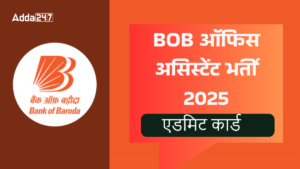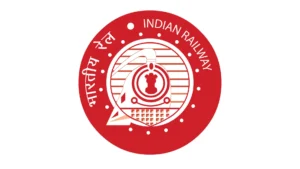Directions (1- 10): Read the following passage carefully and answer
the questions given below it. Certain words are given in bold to help you
locate them while answering some of the questions.
Aztec empire by Herman Cortes is one of the most amazing military
accomplishments in history. With a small fighting force numbering in the
hundreds, Cortes led the Spanish explorers into victory against an Aztec
population that many believe topped 21 million. In light of such a seemingly
impossible victory, the obvious question is: how did a small group of foreign
fighters manage to topple one of the world’s strongest, wealthiest, and most
successful military empires?
First, the Spanish exploited animosity
toward the Aztecs among rival groups and convinced thousands of locals to
fight. In one account of a battle, it is recorded that at least 200,000 natives
fought with Cortes. Next, the Spanish possessed superior military equipment in
the form of European cannons, guns, and crossbows, leading to effective and
efficient disposal of Aztec defenses. For example, Spanish cannons quickly
defeated large Aztec walls that had protected the empire against big and less
technically advanced armies.
Aztecs probably could have succeeded in defending their capital city of
Tenochtitlan had they leveraged their incredible population base to increase
their army’s size and ensured that no rogue
cities would ally with Cortes. In order to accomplish this later goal, Aztec
leader Motecuhzoma needed to send envoys to neighboring cities telling their
inhabitants about the horrors of Spanish conquest and the inevitability of
Spanish betrayal.
exploited the fact that the battle was taking place on their territory. No
reason existed for the Aztecs to consent
to a conventional battle, which heavily favored the Spanish. Motecuhzoma’s
forces should have thought outside the box and allowed Cortes into the city,
only to subsequently use hundreds of thousands of fighters to prevent escape
and proceed in surprise “door-to-door” combat. With this type of battle,
the Aztecs would have largely thwarted Spanish technological supremacy.
However, in the end, the superior weaponry of the Spanish, the pent-up
resentment of Aztec rivals, the failure of Aztec diplomacy, and the lack of an
unconventional Aztec war plan led to one of the most surprising military
outcomes in the past one thousand years.
characterizes the main point the author is trying to convey in the passage?
unconventional war led to an unnecessary defeat
(b) Spanish victory was neither as
impressive nor as surprising as it may first appear
(c) Resentment toward the Aztecs led to
their demise
(d) Herman Cortes masterminded an
amazing military accomplishment
(e) The myopic vision of the Aztecs led
to their unnecessary downfall
Q2. The passage is sequentially
organized in which of the following ways?
reasons for the enigma; discuss the inevitability of the enigma
(b) Define a problem; explain the
sources of the problem; offer a solution to the problem
(c) Introduce a mystery; offer an
explanation for the mystery; provide an alternative explanation for the mystery
(d) Pose a question; offer an answer to
the question; offer an alternative answer to the question
(e) Define a problem; explain the
likelihood of the problem; discuss the consequences of the problem
following about the Aztec view toward an unconventional military confrontation
of the Spanish?
(a) The Aztecs did not consider it
(b) The Aztecs considered it, but
rejected it out of beliefs about how battles ought to be fought
(c) The Aztecs considered this, but it
was too late
(d) The Aztecs were certain a victory
could be achieved via traditional combat
(e) The Aztecs felt the geography of
Tenochtitlan did not favor this strategy
Q4. According to the passage, all of the
following led to Cortes’ success EXCEPT:
(a) Advanced crossbows
(b) Nimble military force
(c) Local Spanish allies
(d) Local tribal friction
(e) Quick destruction of Aztec walls
Q5. Which of the following best
characterizes the author’s view about the inevitability of Aztec demise at the
hands of the Spanish?
(a) Absolutely Inevitable
(b) Likely Inevitable
(c) Ambivalent
(d) Likely Not Inevitable
(e) Absolutely Not Inevitable
Q6. The author implies which of the
following about the nature of Aztec regional influence and power?
(b) Achieved with a non-traditional
military campaign
(c) Based upon a technologically
outdated military
(d) Achieved through alliances
(e) Based upon small yet swift and
brutal military force
Q7. The author’s tone can best be
described as?
(b) Angry
(c) Optimistic
(d) Analytical
(e) Introspective
Directions (8-9): Choose the word/group of
words which is most SIMILAR in
meaning to the word/group of words printed in bold as used in passage.
(a) solace
(b) reprobate
(c) solicit
(d) intrigue
(e) enthrall
Q9. Animosity
(b) endeavor
(c) antipathy
(d) beckon
(e) inveigle
Directions (10): Choose the word/group of
words which is most OPPOSITE in
meaning to the word/group of words printed in bold as used in passage.
(a) amuse
(b) stimulate
(c) provoke
(d) instigate
(e) dissent
Directions (11-15): Read each sentence to find
out whether there is any grammatical or idiomatic error in it. The error, if
any, will be in one part of the sentence. The number of that part is the
answer. If there is ‘No error’, the answer is (e). (Ignore errors of
punctuation, if any.)
interested parties (B) / should be invited and (C) / involved in the discussion.
(D) / No error (E)
(a) A
(b) B
(c) C
(d) D
(e) E
Q12. Although he is my bosom friend, (A) / I
cannot ask him for (B) / money without any (C) / vividly reason. (D) / No error
(E)
(a) A
(b) B
(c) C
(d) D
(e) E
Q13. We would have (A) / accompanied you to (B)
/ the picnic spot if you (C) / would have told us in advance.(D) / No error (E)
(a) A
(b) B
(c) C
(d) D
(e) E
Q14. I do not understand (A) / what to make employees (B) / so
agitated on (C) / such trivial issues. (D) / No error (E)
(a) A
(b) B
(c) C
(d) D
(e) E
Q15. Since most of the urban people (A) / have
been lived in polluted areas (B) / they suffer from severe (C) / diseases caused
by pollution. (D) / No error (E)
(a) A
(b) B
(c) C
(d) D
(e) E
SOLUTIONS:
S1. Ans. (b)
Sol. Option (b) is correct
In order to ascertain the main point
that the author is trying to make, it is important to examine logical flow of
the passage.
1st Paragraph: Explain a seemingly
amazing accomplishment and ask whether it really is as impressive as it first
appears.
2nd Paragraph: Explain factors that made
the impressive accomplishment not as impressive.
3rd Paragraph: Explain how the seemingly
amazing accomplishment didn’t have to turn out the way it did.
4th Paragraph: Explain how the seemingly
amazing accomplishment didn’t have to turn out the way it did.
A. The Aztec failure to fight in an
unconventional manner is discussed only in the last paragraph and is mentioned
only to make a larger point: the fall of the Aztec was not as impressive as it
originally appeared.
B. This encapsulates the logical flow
and main points of the passage.
C. This topic is only discussed during
part of the second paragraph and is mentioned only to make a larger point: the
fall of the Aztec was not as impressive as it originally appeared.
D. The main point of the passage is to
challenge this common belief and point out that it was not as amazing as is
often asserted.
E. The passage never even mentions that
the Aztec had myopic vision let alone makes this the main focus.
S2. Ans. (a)
Sol. Option (a) is correct
In order to see the sequential ordering,
break down the logical flow of the passage.
1st Paragraph: Introduce something that
looks very impressive on the surface and ask how it happened.
2nd Paragraph: Offer several factors
that help explain what seemed so impressive and unbelievable.
3rd Paragraph: Provide several ways that
the seemingly unbelievable was not inevitable.
4th Paragraph: Continue with paragraph
3. Conclude by noting that the seemingly unbelievable and unexplainable was
both explainable and not inevitable.
To summarize the sequential
organization:
Introduce an enigma (“how did a
small group of foreign fighters manage to topple one of the world’s strongest,
wealthiest, and most successful military empires?”)
Explain reasons for the enigma (2nd
paragraph)
Discuss the inevitability of the enigma
(3rd and 4th paragraphs)
A. This matches the sequential order
explained above.
B. The third and fourth paragraphs are
not offering a solution to a problem but rather discussing the inevitability of
an outcome.
C. The third and fourth paragraphs are
not providing an alternative explanation for the mystery but rather discussing
the inevitability of the mystery.
D. The third and fourth paragraphs are
not providing an alternative answer to the question but rather discussing the
inevitability of the mystery.
E. The second paragraph does not discuss
the likelihood of the problem but rather explains the sources of the problem
(i.e., the sources for the seemingly incredible victory of Cortes). The passage
makes no mention of the consequences of the invasion, its success, or its
seemingly impressive status etc.
S3. Ans. (a)
Sol. The author never mentions that the
Aztecs had a view toward an unconventional military conflict with the Spanish.
The topic is mentioned only as the author notes that the Aztecs should have
pursued this type of a confrontation with the Spanish. Further, when the author
did mention unconventional combat, he prefaced it with the statement:
“Motecuhzoma’s forces should have thought outside the box…” Based
upon these facts, our best inference is that the Aztecs did not ever consider
an unconventional military confrontation with Cortes.
A. This seems to be implied in the
author’s suggestion that “Motecuhzoma’s forces should have thought outside
the box…”
B. The passage never mentions nor
implies that the Aztecs considered an unconventional military confrontation
with the Spanish.
C. The passage never mentions nor
implies that the Aztecs considered an unconventional military confrontation
with the Spanish.
D. The passage never mentions nor
implies that the Aztecs were certain they could achieve victory in a
traditional means.
E. The passage never mentions nor
implies that the Aztecs considered an unconventional military confrontation,
let alone how it would be influenced by the geography of Tenochtitlan.
S4. Ans. (b)
Sol. A. The passage mentions this as a
source of success: “the Spanish possessed superior military equipment in
the form of European cannons, guns, and crossbows”
B. Although the passage mentions that
Cortes’ army was small, it implies that this as a weakness. The passage never
states that the military was nimble nor does it mention this as a source of
success.
C. The passage mentions this as a source
of success: “In one account of a battle, it is recorded that at least
200,000 natives fought with Cortes.”
D. The passage mentions this as a source
of success: “animosity toward the Aztecs among rival groups”
E. The passage mentions this as a source
of success: “Spanish cannons quickly defeated large Aztec walls”
S5. Ans. (d)
Sol. The relevant portion of the passage
is: “Despite the Spanish advantages, the Aztecs probably could have
succeeded in defending their capital city of Tenochtitlan”
A. This does not match with the passage:
“the Aztecs probably could have succeeded in defending their capital”
B. This does not match with the passage:
“the Aztecs probably could have succeeded in defending their capital”
C. This does not match with the passage:
“the Aztecs probably could have succeeded in defending their capital”
D. This does match with the passage:
“the Aztecs probably could have succeeded in defending their capital”
E. This does not match with the passage:
“the Aztecs probably could have succeeded in defending their
capital”.
S6. Ans. (a)
Sol. Option (a) is correct
The relevant portion of the passage is:
“Spanish exploited animosity toward the Aztecs”
A. This matches the description of the
passage.
B. The passage never mentions that that
Aztec fought a non-traditional military campaign.
C. The question refers to the
“regional” Aztec influence and the passage never states or implies
that the Aztec military was outdated when compared to regional enemies.
D. The passage implies that the Aztecs
lacked adequate alliances.
E. The passage states that the Aztecs
had a large military force (although we do not know whether it was larger than
other regional players; nonetheless, the passage does not discuss the Aztec
military size and speed relative to regional enemies).
S7. Ans. (d)
Sol. Option (d) is correct
The author begins with a problem and
spends the remainder of the passage analyzing the causes of the problem (2nd
paragraph) and the inevitability of the problem (3rd and 4th paragraph).
A. The author expresses virtually no
emotion in the passage.
B. The author expresses virtually no emotion
in the passage.
C. The author is analyzing a historical
issue and is not expressing personal emotions such as optimism or pessimism.
D. This captures the author’s tone as
the author analyzes an enigma by explaining it and discussing the extent of its
inevitability.
E. The author is addressing history from
an objective and outside view, not looking inward. The author never mentions
himself.
S8. Ans. (b)
Sol. Rogue means a dishonest or
unprincipled. Hence it has same meaning as reprobate.
Solace means comfort or consolation in a
time of great distress or sadness.
Solicit means ask for or try to obtain
(something) from someone.
Intrigue means arouse the curiosity or
interest of, fascinate.
Enthrall means capture the fascinated
attention of.
S9. Ans. (c)
Sol. Animosity means strong hostility.
Hence it has same meaning as antipathy.
Beckon means appear attractive or
inviting.
Inveigle means persuade (someone) to do
something by means of deception or flattery.
S10. Ans. (e)
Sol. Consent means permission for
something to happen or agreement to do something. Hence it has opposite meaning
as dissent.
Amuse means provide interesting and
enjoyable occupation for (someone), entertain.
Instigate means bring about or initiate
(an action or event).
S11. Ans. (e)
Sol. The sentence is grammatically correct.
S12. Ans. (d)
Sol. ‘vivid reason’ will be used in place of
‘vividly reason’ because ‘vividly’ is an adverb while ‘vivid’ is an adjective
and ‘reason’ is a noun for which adjective is used to express its qualities.
S13. Ans. (d)
Sol. ‘had told’ will be used in place of ‘would have told’ as for
unreal situation of past, ‘Subject + would/ could/ might/ should + have + V3’
is used in main clause and ‘Subject + had + V3’ is used in conditional clause.
Ex. I would have helped you if you had come earlier.
S14. Ans. (b)
Sol. ‘what makes/ what has made/ what made’
will be used in place of ‘what to make’.
S15. Ans. (b)
Sol. Use ‘live’ in place of ‘have been lived’
as simple present tense is used for work done for some permanent work of
present.
Download PDF of this English Quiz for IBPS Clerk Prelims 2020
Visit here to discuss all your queries related to Government Exams
Practice with Crash Course and Online Test Series for IBPS Clerk Prelims 2020:
- Bank Maha Pack (1 Year Validity)
-
IBPS Clerk 2020 Online Coaching for Clerk Prelims | Complete Bilingual Batch by Adda247
- Complete IBPS 2020 exams Video Course



 BOB ऑफिस असिस्टेंट एडमिट कार्ड 2025: जान...
BOB ऑफिस असिस्टेंट एडमिट कार्ड 2025: जान...
 BOB ऑफिस असिस्टेंट परीक्षा तिथि 2025 जार...
BOB ऑफिस असिस्टेंट परीक्षा तिथि 2025 जार...
 RRB NTPC UG CBT 2 Admit Card 2025 जारी, ...
RRB NTPC UG CBT 2 Admit Card 2025 जारी, ...








